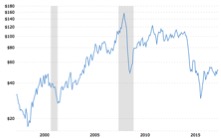Knowing when to let go
Deciding when to buy particular assets is often far easier than deciding when to sell for investors.
Kenny Roger’s song “The Gambler” can also be related to investing with the chorus “You’ve got to know when to hold ‘em, know when to fold ‘em, know when to walk away and know when to run”.
It is often said by investors that deciding when to buy is far easier than deciding when to sell.
Knowing when to sell however can be equally as important to generating returns, and successful investing requires a framework in which to make selling decisions.
So here are some common ‘red flags’ that professional investors look for to help them decide whether it is time to sell.
In my opinion, significant selling from more than one director or senior manager is an obvious issue that should prompt SMSF trustees to review their investment in a particular company. There can of course be good reasons behind director selling, such as raising funds to pay a tax liability upon the issue of company shares, but when multiple directors are selling, it warrants investigation.
Keeping an eye on the level of shorting activity in a company’s shares is another good flag for SMSF Trustees to watch for that could prompt a sell decision. Shorting is defined as “sell (stocks or other securities or commodities) in advance of acquiring them, with the aim of making a profit when the price falls.” Information on short positions can be found on the ASIC website in a section labelled ‘Short position reports table’.
While not all companies that are shorted heavily result in a declining share price, Flight Centre is a good example that recently rose sharply despite being heavily shorted, SMSF trustees should appreciate that short sellers are generally very sophisticated investors and their views should not be ignored.
Some of the most heavily shorted stocks in Australia recently are retailers. It is not coincidental that Amazon is soon to launch, household debt levels are at record highs probably constraining retail spending.
Roger Montgomery, chief executive of Montgomery Investment Management says that the obvious red flags are a chief executive or chief financial officer resignation. Increasing earnings per share that is accompanied by declining cash flows and companies that restate their financial statements are also significant flags that Mr Montgomery believes investors should look for.
Douglas Isles, investment specialist, Platinum Asset Management says “strong positive consensus opinion from analysts is a red flag that invariably coincides with excessive valuation”. Often referred to as a one-sided trade, investors would be wise to review investments where the consensus of opinion is suggesting that a particular outcome is a certainty.
For example, it was not long ago when oil traded at $150 per barrel — see chart below — where consensus opinion was that the world was within reach of peak oil production, and the oil price was predicted to continue to remain elevated. An investment into oil stocks at this time would have yielded poor results to date.

Platinum Asset Management also take note of management behaviour as another red flag.
“Excessive management compensation and companies where management put themselves ahead of their clients” are cues that investors should think about according to Mr Isles.
SMSF trustees would be wise to avoid emotional attachment with their investments and remain flexible in their thinking so that they can react to new information as it comes to hand, rather than adopting a buy and hold forever mentality.
By Mark Draper, financial adviser, GEM Capital








